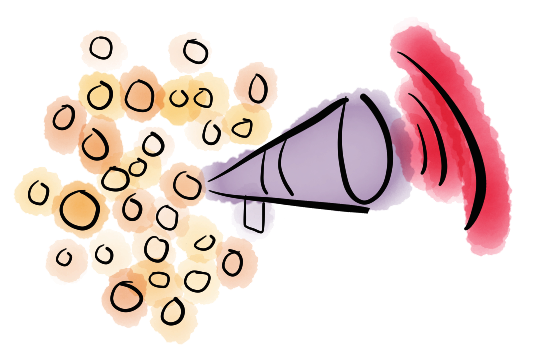Collective Behavior: Amplification
Posted February 2016 by Bryan Daniels

How do little things combine to do big things?
Collective behavior in living systems is fascinating and diverse: proteins collectively perform metabolism in your cells; neurons collectively process information in your brain; honeybees collectively forage and care for their young.
Collective behavior in inanimate systems is also beautiful and can be more pristine: the fact that the atoms of carbon in a diamond are equivalent means that the crystal structure they form can be utterly precise. It also makes it easier to describe real crystals and predict their properties: once you know the fundamental repeating building block, it's just a matter of scaling up to have trillions of repeating units.
Physics tells us a lot about how to deal with these less complicated collective systems. We can connect the properties of atoms to the properties of familiar objects, like the hardness of a diamond. Can this expertise be ported to biological examples, where individuals are not so simple?
One connection we've been thinking about involves how information is amplified in producing a system's aggregate behavior. As an example of a system with low amplification, imagine our diamond under usual conditions: if we somehow jostled just a few atoms, this wouldn't have a huge effect. The jostling would quickly dissipate without changing the overall structure.
In many living systems, though, changes to individuals can have a large effect on the whole. A single bird might change the direction of a flock; a change to the activity of a few neurons might affect your subsequent behavior.
We can quantify this "amplification" with a fundamental measure from information theory—the Fisher information—which also turns out to have interesting connections to the idea of a phase transition in statistical physics. It's also a natural measure from the point of view of biology: Amplifying important information and damping extraneous noise can be key to the survival of a group.
In this way, amplification measures a fundamental property of collectives, one that could be compared across different systems. Making the connection to statistical physics, we might ask questions like, "How far is this fish school from a phase transition?" Making the connection to biology, we might ask, "How is the correct information from individuals amplified to influence the behavior of the whole?"
Through this lens of amplification and others that describe distinct aspects of information processing, we aim eventually to map out the space of strategies used by living systems as they combine to form functional aggregates.